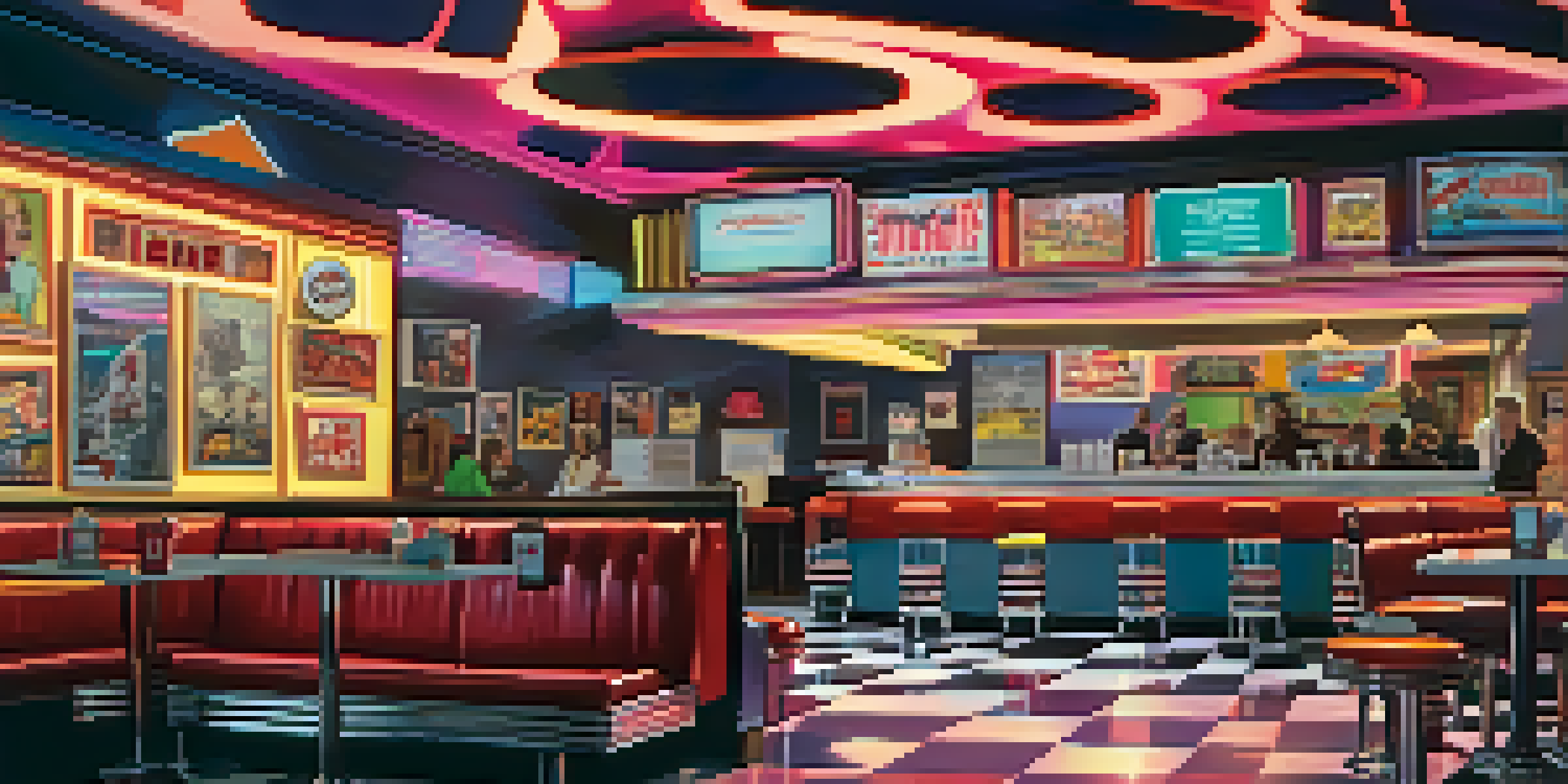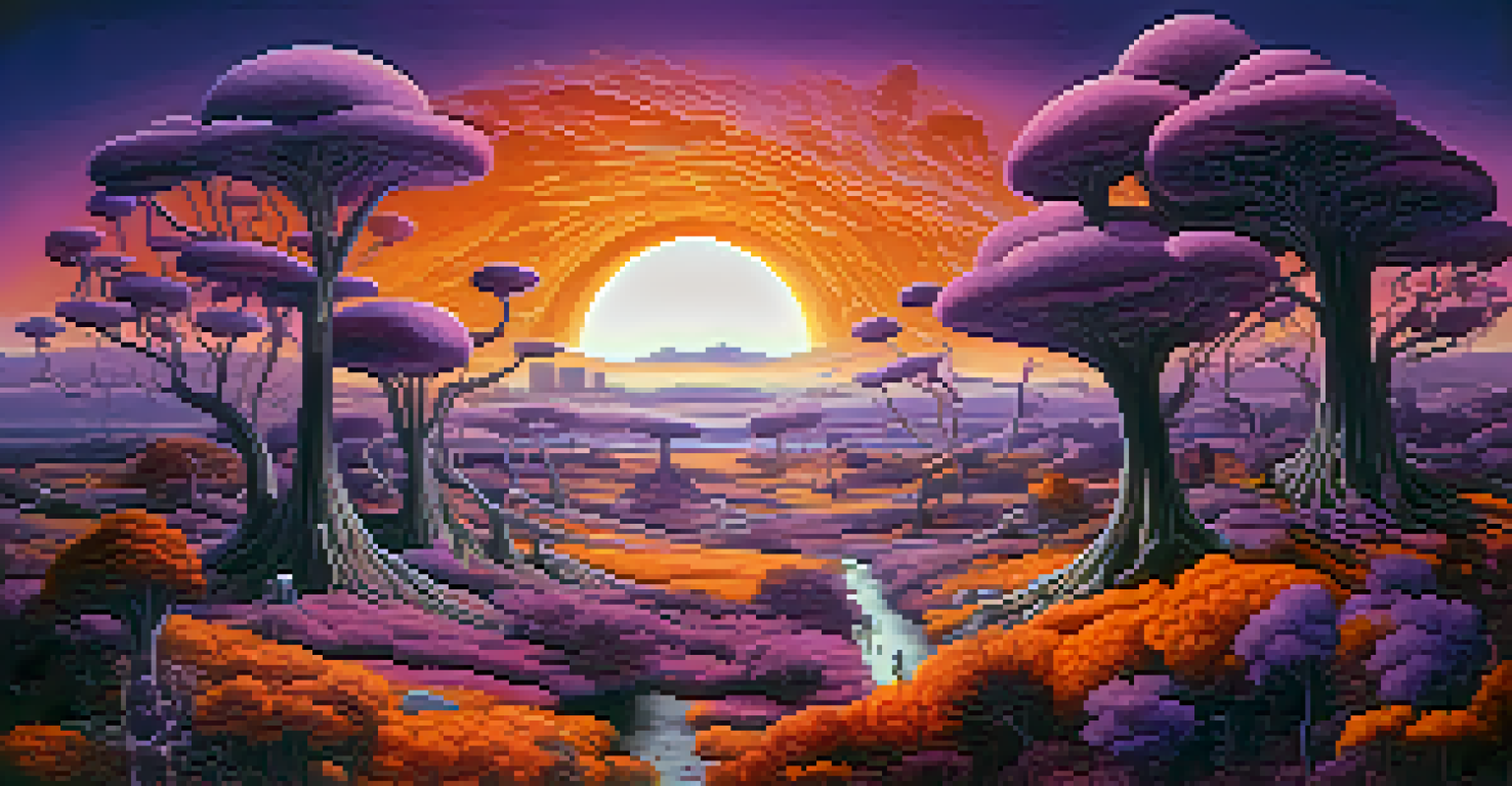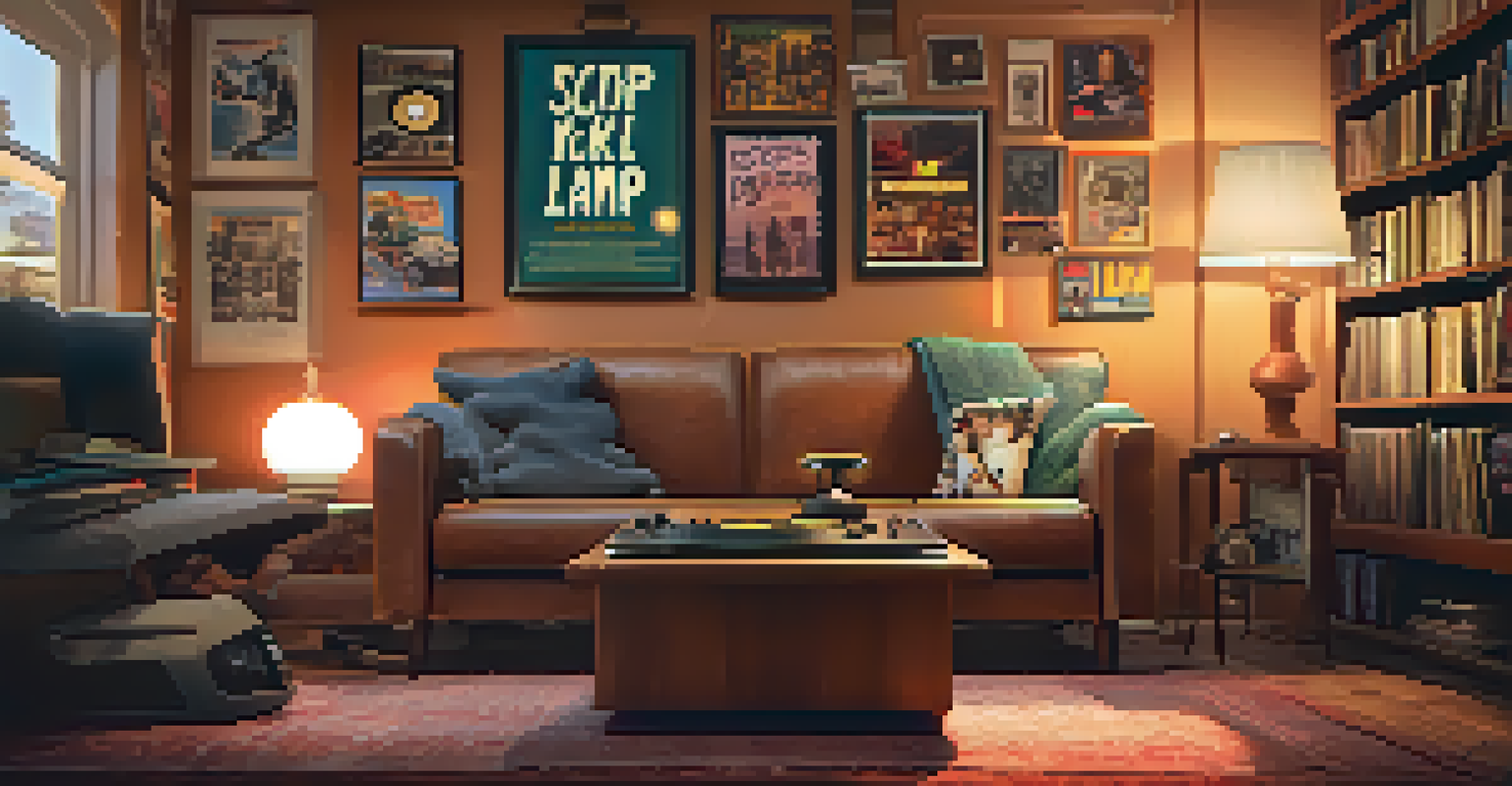The Aesthetic Appeal of Cult Classic Cinematography

Understanding Cult Classics and Their Cinematic Impact
Cult classics are films that, despite initial rejection, develop a dedicated fan base over time. Their unique storytelling and often unconventional styles resonate with audiences, creating a sense of belonging among viewers. This phenomenon highlights how cinema can transcend traditional box office success, influencing art and culture in profound ways.
Film is a powerful thing. It can create a collective memory, a sense of belonging, and a cultural identity that shapes our views and values.
These films often become cherished parts of pop culture, inviting repeated viewings and discussions among fans. The aesthetic appeal of cult classics lies not only in the narratives but also in their distinctive visual styles. This combination fosters a deeper appreciation for the artistry behind film-making, culminating in a lasting legacy that inspires future creators.
From quirky characters to innovative cinematography, cult classics often reflect the zeitgeist of their respective eras. The aesthetics may seem unconventional, yet they evoke powerful emotions and connections, often serving as a mirror to societal norms. Understanding this impact is essential to appreciating the artistic merit of these films.
The Role of Cinematography in Creating Visual Identity
Cinematography shapes the visual identity of films, guiding the audience's emotional journey. In cult classics, this is often achieved through unique camera angles, lighting, and color palettes that enhance the storytelling. For instance, the use of vibrant colors in films like 'The Rocky Horror Picture Show' creates an unforgettable visual experience that draws viewers in.

Moreover, the choices made by cinematographers can evoke specific moods and themes that resonate deeply with audiences. The gritty, handheld camera work in 'Clerks' contrasts sharply with the polished visuals typically found in mainstream films, adding to its authenticity. This distinctive approach cultivates a raw, relatable aesthetic that many fans cherish.
Cult Classics Foster Community
Cult classics create a dedicated fan base through unique storytelling and visual styles that resonate deeply with audiences.
Ultimately, the artistry of cinematography in cult classics invites viewers to engage with the film on a more personal level. As audience members connect with the visuals, they also form emotional ties to the characters and narratives. This connection is crucial for the cult following that many of these films enjoy.
Iconic Visual Styles That Define Cult Classics
Certain visual styles have become synonymous with cult classics, often setting them apart from mainstream cinema. For example, the surreal imagery in 'Eraserhead' captures the audience's imagination, immersing them in a dreamlike world. Such distinctive visuals encourage viewers to interpret the film in their unique ways, fostering a sense of connection and ownership.
A film is never really good unless the camera is an eye in the head of a poet.
The use of low-budget effects and unconventional techniques often adds to the charm of cult classics. Films like 'The Evil Dead' showcased creativity in overcoming financial constraints, resulting in a unique aesthetic that remains influential. This resourcefulness can inspire aspiring filmmakers to think outside the box, focusing on creativity over budget.
Ultimately, these iconic visual styles contribute to the films' lasting appeal, making them memorable experiences for viewers. The distinctiveness of their aesthetics often leads to a strong sense of nostalgia, drawing fans back time and again. This nostalgic connection is a key component of what keeps cult classics alive in the public consciousness.
The Influence of Color and Lighting in Storytelling
Color and lighting play pivotal roles in shaping the mood and tone of a film. In cult classics, directors often use bold color choices to evoke specific emotions or highlight themes. For example, the vibrant hues in 'The Big Lebowski' create an atmosphere that is both whimsical and laid-back, perfectly aligning with the film's overall vibe.
Lighting techniques, such as high contrast or chiaroscuro, can also deepen the storytelling. 'Donnie Darko' employs shadowy lighting to reflect the protagonist's inner turmoil, enhancing the film's psychological depth. Such thoughtful choices elevate the narrative, allowing viewers to engage with the characters on a more profound level.
Cinematography Shapes Viewer Emotion
Distinctive cinematography in cult classics enhances emotional connections, guiding viewers through the film's narrative.
By manipulating color and lighting, filmmakers craft visually stunning experiences that resonate long after the credits roll. These elements not only enhance the aesthetics but also enrich the storyline, inviting deeper analysis from audiences. This intricate balance between visuals and narrative is a hallmark of the cult classic genre.
Symbolism and Imagery: Crafting Deeper Meanings
Cult classics often employ rich symbolism and imagery to convey deeper meanings that resonate with viewers. For instance, the recurring motifs in 'The Room' amplify its themes of betrayal and friendship, inviting fans to dissect its layered narrative. This complexity adds an element of intrigue, encouraging repeated viewings and discussions.
The use of visual metaphors can also enhance the storytelling experience. In 'Fight Club', the symbolism of soap and consumerism critiques modern society, prompting audiences to reflect on their own lives. Such thought-provoking imagery sets cult classics apart, inviting viewers to engage critically with the film's themes.
Ultimately, the infusion of symbolism and imagery enriches the viewing experience, allowing for personal interpretations. This depth fosters a community of fans who connect over shared analyses and insights. It’s this intellectual engagement that often solidifies a film's status as a cult classic.
Cult Classic Soundtracks: Enhancing the Visual Experience
Music plays a crucial role in shaping the overall experience of cult classic films. Iconic soundtracks not only enhance the emotional depth of scenes but also become integral to the film's identity. For example, the eclectic mix of songs in 'Guardians of the Galaxy' perfectly complements its quirky visuals, creating a cohesive aesthetic that resonates with viewers.
In many cult classics, soundtracks feature tracks that evoke nostalgia, further deepening the audience's connection to the film. The use of retro songs in 'Stranger Things' revitalizes the 1980s aesthetic, creating a sense of familiarity that draws viewers in. This combination of visuals and music enhances the overall atmosphere, leaving a lasting impression.
Soundtracks Enhance Film Identity
Memorable soundtracks in cult classics not only deepen emotional engagement but also become anthems that unite fans.
Moreover, memorable soundtracks often become anthems for fans, fueling the film's cult status. The songs create a sense of community among viewers, who bond over shared musical experiences. This connection through sound and visuals is a testament to the power of cult classics and their enduring appeal.
The Lasting Impact of Cult Classic Aesthetics
The aesthetic appeal of cult classics continues to influence modern cinema, inspiring filmmakers to embrace creativity and individuality. This impact is evident in the resurgence of retro styles and unconventional narratives in contemporary films. By studying these classics, new creators learn to challenge norms and take risks in their storytelling.
Moreover, cult classics often serve as a cultural touchstone, reflecting societal values and concerns. The aesthetics can spark conversations about identity, politics, and the human experience, fostering a deeper understanding of the world around us. This relevance keeps cult classics alive in today’s cultural discourse.

Ultimately, the lasting impact of cult classic aesthetics is a testament to their artistic merit and cultural significance. As audiences continue to celebrate these films, their visual styles and innovative storytelling will inspire generations to come. The legacy of cult classics remains, reminding us of the power of cinema to reflect and shape our lives.